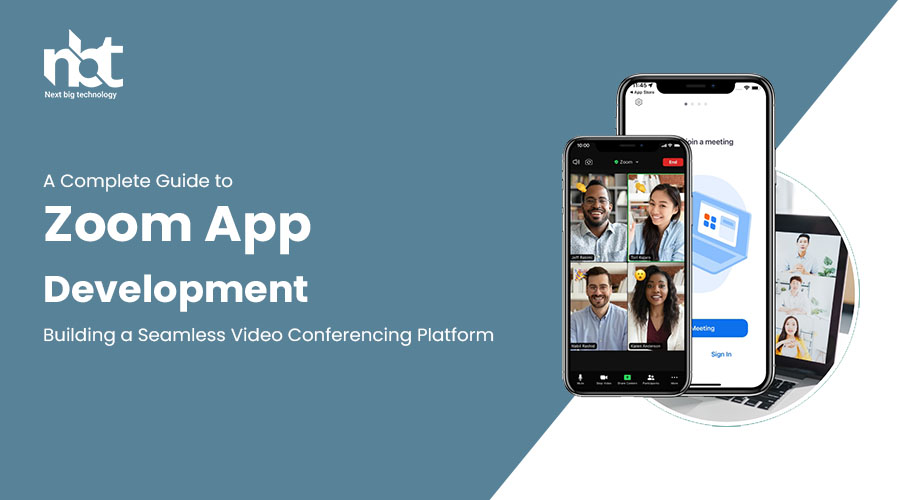Introduction:
Zoom has revolutionized the way we communicate and collaborate, especially in the era of remote work and virtual meetings. As a leading video conferencing platform, Zoom offers a seamless and user-friendly experience for individuals, teams, and businesses. If you’re interested in understanding the ins and outs of Zoom app development and considering building a similar video conferencing platform, this comprehensive guide is for you. We will explore the key features and functionalities of the Zoom app and provide valuable insights for creating your own video conferencing solution. Let’s dive in!
I. Understanding the Zoom App:
- Video Conferencing:
- Zoom provides high-quality video conferencing capabilities, allowing users to join and host meetings with participants from around the world. Users can collaborate in real-time through video, audio, and chat.
- Screen Sharing and Collaboration:
- Zoom enables users to share their screens, making it easy to present slides, documents, or applications. Participants can collaborate on shared content, annotate, and co-edit in real-time.
- Meeting Scheduling and Invitations:
- Zoom offers features for scheduling and organizing meetings. Users can send invitations with meeting details, including date, time, and meeting links. Calendar integrations streamline scheduling processes.
- Virtual Backgrounds and Filters:
- Zoom allows users to customize their video appearance with virtual backgrounds, filters, and effects. This feature enhances the visual experience and adds an element of fun to meetings.
- Breakout Rooms:
- Zoom’s breakout rooms feature enables users to split larger meetings into smaller groups for focused discussions or activities. This facilitates collaboration and interaction among participants.
- Recording and Playback:
- Zoom allows users to record meetings, including video, audio, and screen sharing. Recordings can be saved locally or in the cloud and can be accessed for later review or sharing.
- Polls and Q&A:
- Zoom provides interactive features such as polls and Q&A sessions. Meeting hosts can engage participants, gather feedback, and facilitate discussions through these interactive tools.
- Security and Privacy:
- Zoom prioritizes security and privacy, offering features like meeting password protection, waiting rooms for participant management, and end-to-end encryption for secure communication.
- Integration with Third-Party Tools:
- Zoom integrates with various third-party tools and services, including calendar apps, project management platforms, and collaboration tools. These integrations enhance productivity and streamline workflows.
II. Steps to Develop a Video Conferencing App like Zoom:
- Define Your Objectives and Target Audience:
- Determine the purpose of your video conferencing app and identify your target audience. Consider the specific needs of businesses, educational institutions, or individuals and their requirements for seamless communication.
- Conduct Market Research:
- Study the video conferencing app market, including platforms like Zoom and other competitors. Analyze user behavior, identify gaps, and explore opportunities to differentiate your app.
- Design the User Interface (UI) and User Experience (UX):
- Create an intuitive and visually appealing UI that enhances the video conferencing experience. Prioritize features like easy meeting scheduling, screen sharing, and participant management.
- Develop Video and Audio Conferencing Capabilities:
- Invest in building robust video and audio conferencing features. Ensure high-quality video and audio transmission, optimize bandwidth usage, and enable smooth multi-participant interactions.
- Implement Screen Sharing and Collaboration Features:
- Enable users to share their screens seamlessly and collaborate on shared content. Develop features for annotation, co-editing, and file sharing to facilitate collaboration in real-time.
- Integrate Meeting Scheduling and Notifications:
- Implement features for meeting scheduling, invitations, and calendar integrations. Provide notifications for upcoming meetings and reminders to enhance user engagement.
- Enable Virtual Backgrounds and Filters:
- Incorporate features that allow users to customize their video appearance with virtual backgrounds, filters, and effects. Optimize these features for real-time performance and compatibility with different devices.
- Develop Breakout Rooms Functionality:
- Create features for dividing larger meetings into smaller breakout rooms. Enable users to assign participants, manage breakout room activities, and facilitate seamless transitions between rooms.
- Include Recording and Playback Features:
- Implement capabilities for meeting recording, including video, audio, and screen sharing. Develop features for playback, sharing, and storage options for recorded meetings.
- Integrate Interactive Tools:
- Develop features for polls, Q&A sessions, and audience engagement. Enable meeting hosts to gather feedback, conduct surveys, and enhance participant interaction.
- Focus on Security and Privacy:
- Prioritize the security and privacy of user data and communications. Implement features like end-to-end encryption, meeting passwords, and participant management tools for secure and controlled communication.
- Test and Optimize Performance:
- Conduct thorough testing across different devices, network conditions, and user scenarios to ensure smooth app performance. Gather feedback from beta testers and address any issues or bugs.
- Deployment and Marketing:
- Prepare your app for release by generating necessary certificates and provisioning profiles. Develop a comprehensive marketing strategy to promote your app, including social media campaigns, targeted advertising, and partnerships with relevant businesses or organizations.
III. Conclusion:
Developing a video conferencing app like Zoom requires careful planning, attention to user needs, and the right technical implementation. By understanding how the Zoom app works and following the steps outlined in this guide, you can create a successful video conferencing platform. Prioritize user experience, invest in design and development expertise, and continuously improve your app based on user feedback. With dedication and a focus on delivering seamless communication, your video conferencing app has the potential to attract users, businesses, and educational institutions, becoming a prominent player in the market.









